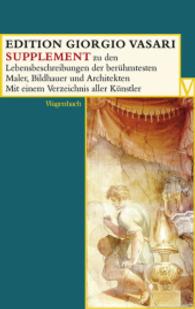Full Description
Within linguistics, there has been a great deal of interest in discourse particles for some time now, especially within semantics and pragmatics. The term 'discourse particles' has been used to cover a broad range of phenomena, including such things as 'sentence final particles,' 'discourse adverbs' and other related phenomena. However, most research in the area (particularly within formal semantics and pragmatics) focuses on a restricted set of languages, and there is little consensus on the proper formal treatment of particles, partly due to the limited range of data available.
In recent years, there has been extensive development of the formal approach to discourse particles, which often treats these words as devices for marking information update. Also important is the extension of data to non-Western languages like Japanese, Korean or Chinese. These volumes are the first to give an exclusive focus on particles in non-European languages (in this case Asian languages), from the perspective of formal as well as non-formal semantics and pragmatics.
These volumes include papers on Japanese, Mandarin, Tagalog, Kimaragang Dusun, Malay, Singlish, Thai and Vietnamese. The papers are informed by recent theoretical work in formal semantics and pragmatics relating to the meaning of particles. The collection contributes to our theoretical understanding of the meaning of discourse particles and to empirical knowledge of discourse particles in the languages of Asia.
Contents
Vol 1:
1 On the mirative use of the no (da) construction in Japanese 2 Evidentiality, inference, conclusion: Japanese no as a particle and complementizer 3 Mandarin Chinese sentence final de as a marker of private evidence 4 How are contrasts marked?—The case of ne in in Mandarin Chinese 5 Cantonese question particles 6 Softness, assertiveness and their expression via Cantonese sentence final particles 7 Formality weakening and the underspecified expressive yo in Korean
Vol 2:
1 Tagalog pala: An unsurprising case of mirativity 2 Discourse particles in Tagalog: The case of e 3 A Kimaragang status particle: Accessible information 4 A syntactic universal in a contact language: The story of Singlish already 5 On the discourse marker dah in Colloquial Malay (and sudah in Sabah Malay) 6 On the apparently non-additive use of Malay additive pun 7 A unified analysis of (some) discourse particles in Thai 8 Interpersonal uses of the pragmatic particle /kɔ̂ɔ/ in Thai conversation 9 A scalar semantics for the Vietnamese sentence-final particle cõ 10 Syntax-information structure interface in Vietnamese







